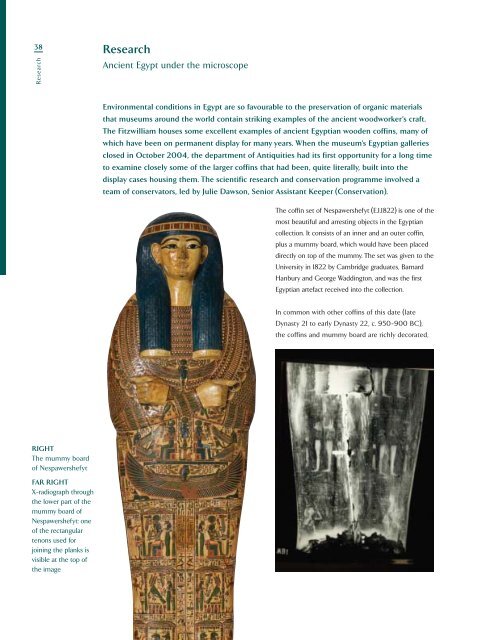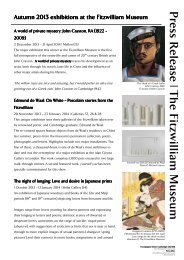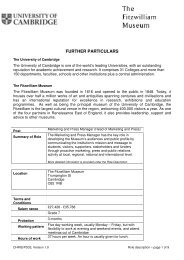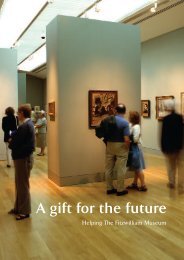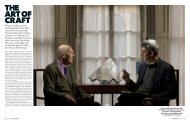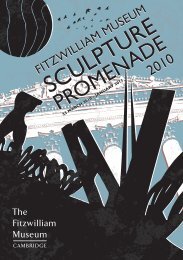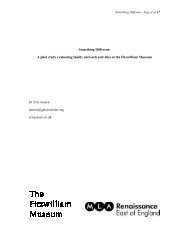The Fitzwilliam Museum - University of Cambridge
The Fitzwilliam Museum - University of Cambridge
The Fitzwilliam Museum - University of Cambridge
Create successful ePaper yourself
Turn your PDF publications into a flip-book with our unique Google optimized e-Paper software.
38 Research<br />
Research<br />
RIGHT<br />
<strong>The</strong> mummy board<br />
<strong>of</strong> Nespawershefyt<br />
FAR RIGHT<br />
X-radiograph through<br />
the lower part <strong>of</strong> the<br />
mummy board <strong>of</strong><br />
Nespawershefyt: one<br />
<strong>of</strong> the rectangular<br />
tenons used for<br />
joining the planks is<br />
visible at the top <strong>of</strong><br />
the image<br />
Ancient Egypt under the microscope<br />
Environmental conditions in Egypt are so favourable to the preservation <strong>of</strong> organic materials<br />
that museums around the world contain striking examples <strong>of</strong> the ancient woodworker’s craft.<br />
<strong>The</strong> <strong>Fitzwilliam</strong> houses some excellent examples <strong>of</strong> ancient Egyptian wooden c<strong>of</strong>fins, many <strong>of</strong><br />
which have been on permanent display for many years. When the museum’s Egyptian galleries<br />
closed in October 2004, the department <strong>of</strong> Antiquities had its first opportunity for a long time<br />
to examine closely some <strong>of</strong> the larger c<strong>of</strong>fins that had been, quite literally, built into the<br />
display cases housing them. <strong>The</strong> scientific research and conservation programme involved a<br />
team <strong>of</strong> conservators, led by Julie Dawson, Senior Assistant Keeper (Conservation).<br />
<strong>The</strong> c<strong>of</strong>fin set <strong>of</strong> Nespawershefyt (E.1.1822) is one <strong>of</strong> the<br />
most beautiful and arresting objects in the Egyptian<br />
collection. It consists <strong>of</strong> an inner and an outer c<strong>of</strong>fin,<br />
plus a mummy board, which would have been placed<br />
directly on top <strong>of</strong> the mummy. <strong>The</strong> set was given to the<br />
<strong>University</strong> in 1822 by <strong>Cambridge</strong> graduates, Barnard<br />
Hanbury and George Waddington, and was the first<br />
Egyptian artefact received into the collection.<br />
In common with other c<strong>of</strong>fins <strong>of</strong> this date (late<br />
Dynasty 21 to early Dynasty 22, c. 950-900 BC),<br />
the c<strong>of</strong>fins and mummy board are richly decorated,


